Welcome to our free classical music site

Do you write about classical music? Are you a blogger? Want to team up with Classical Connect? Send us a message, let's talk!

Do you write about classical music? Are you a blogger? Want to team up with Classical Connect? Send us a message, let's talk!
April 10, 2017. Robert Schumann, Eichendorff Liederkreis, Part I. Today we present the first part of an article about one of the most captivating song cycles in the history of European music, Schumann’s Liederkreis (song cycle) op. 39. Based on the poetry of Joseph Eichendorff, the cycle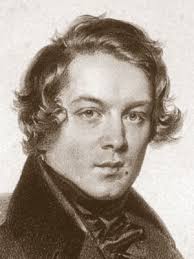 is usually called Eichendorff Liederkreis to distinguish it from another song cycle, op. 24, written on the poems by Heinrich Heine earlier that same year (1840), Schumann’s Year of Song. There are many great recordings of Eichendorff Liederkreis, made both by male (tenors and baritones) and female (soprano and mezzo) singers: Dietrich Fischer-Dieskau made a famous recording, and so did Hermann Prey, also a baritone. The English tenor Ian Bostridge made a wonderful recording, and Peter Schreier, a German tenor. Jessye Norman, a dramatic soprano, was excellent in this cycle, but so was the Dutch lyric soprano Elly Ameling. We decided to illustrate Eichendorff Liederkreis with the recording made by a lesser known but superb Leider singer, the German baritone Christian Gerhaher. Gerold Huber is on the piano. ♫
is usually called Eichendorff Liederkreis to distinguish it from another song cycle, op. 24, written on the poems by Heinrich Heine earlier that same year (1840), Schumann’s Year of Song. There are many great recordings of Eichendorff Liederkreis, made both by male (tenors and baritones) and female (soprano and mezzo) singers: Dietrich Fischer-Dieskau made a famous recording, and so did Hermann Prey, also a baritone. The English tenor Ian Bostridge made a wonderful recording, and Peter Schreier, a German tenor. Jessye Norman, a dramatic soprano, was excellent in this cycle, but so was the Dutch lyric soprano Elly Ameling. We decided to illustrate Eichendorff Liederkreis with the recording made by a lesser known but superb Leider singer, the German baritone Christian Gerhaher. Gerold Huber is on the piano. ♫
In his early years as a composer, Robert Schumann composed virtually exclusively for the piano. However, the year of 1840 saw at least the creation of 138 songs. Since then, this abundant creative outpouring has become known as Schumann’s Liederjahr, or “Year of Song.” The sudden shift from piano to vocal music, though, was not purely coincidental. It marked the culmination of his courtship of Clara Wieck, and his long-awaited and hard-won marriage to her.
Schumann and Clara first met in March 1828 at a musical evening in the home of Dr. Ernst Carus. So impressed was Schumann with her skill at the piano, he soon after began taking piano lessons from her teacher and father, Friedrich, during which time he took up residence in the Wieck’s household. In such close proximity, Schumann and Clara soon formed a close bond that would, in time, blossom into a romantic relationship. Friedrich, however, did not think highly of Schumann. Thus, they kept their relationship a secret, and in 1837, on Clara’s 18th birthday, Schumann proposed to her. Clara accepted, yet her father refused to give his consent. However, this did not deter the two young lovers, though it did place a strain on their relationship. Schumann and Clara continued to exchange love letters, and met in secret whenever they could. In a display of tender devotion, Schumann would even wait for hours in a café just to catch a glimpse of Clara as she left one of her concerts. Refusing to be apart, the couple sued Clara’s father. After a lengthy court battle, Clara was finally allowed to marry Schuman without her father’s consent. The wedding took place in 1840.
Liederkreis, op. 39 was one of the song cycles, along with Frauenliebe und -leben and Dichterliebe, composed during the intensive creative episode surrounding Schumann’s marriage to Clara. Based on poetry of Joseph Freiherr von Eichendorff, Schumann himself described the songs as his “most Romantic music ever.” The cycle was begun in May, and thus displays Schumann’s rapid advancement and growing sophistication as a composer of song. Interestingly, for a composer with such an affinity for motivic and thematic unity, opus 39 is one of Schumann’s least unified cycles. No narrative links the songs to together as in Frauenliebe und -leben, nor are there connecting or recurring themes as in the case of that cycle or of Dichterliebe. However, a common thread still weaves its way throughout the songs. All, except for Intermezzo, are explicitly set in nature. Furthermore, a theme of longing and separation permeate many of the songs, with a few evenly grimly touching upon death. Yet, ultimately, the cycle culminates in the blissful “Frühlingsnacht,” in which the poet, quite beyond his own belief, has won the object of his affection, and reveals that the songs of opus 39 were perhaps Schumann’s emotional outlet during the time leading up to Schumann’s marriage to Clara.
Opening the cycle is the lonesome “In der Fremde” (here). In a foreign land, the poet looks longingly towards his homeland. Yet, even there, he knows he would remain a foreigner—his father and mother dead, no one would know him (“Es kennt mich dort keiner mehr”). He longs for the peaceful rest his parents now enjoy (“Wie bald kommt die stille Zeit”), when no one in the strange land shall know him either. An unsettled accompaniment of broken chords forms the foundation of Schumann’s setting. The vocal melody is simple. During the first stanza, it hovers closely above the tonic, reaching only up to the subdominant and each time falling back down, effectively capturing the gloomy thoughts that weigh down upon the poet. The melody, as well as the piano accompaniment, changes, however, during the second stanza. Briefly, the music turns away from F-sharp minor to A major as the poet wistfully turns his thoughts towards his parents. Yet, a grim A-sharp foils the melody’s diatonic descent on the words “da ruhe ich auch” (“I, too, shall rest”), and quite startlingly ushers back in the morbid state of the poet. The final line of the poem (“und Keiner kennt mich mehr hier”), twice stated, is most poignantly rendered in F-sharp major. Yet, the warm and comforting resolution of the major key is entirely thwarted by Schumann’s persistent inclusion of G natural, most affectingly in the closing strains of the voice. The piano then echoes the vocal melody’s last strain during its brief postlude. (Continue reading here).Permalink
April 2, 2017. Rachmaninov. Anybody who pays attention to the musical calendar could accuse us of being prejudiced against Sergei Rachmaninov. Last week we wrote about Antonio de Cabezón, a somewhat obscure Spanish composer of the 17th century with a questionable birth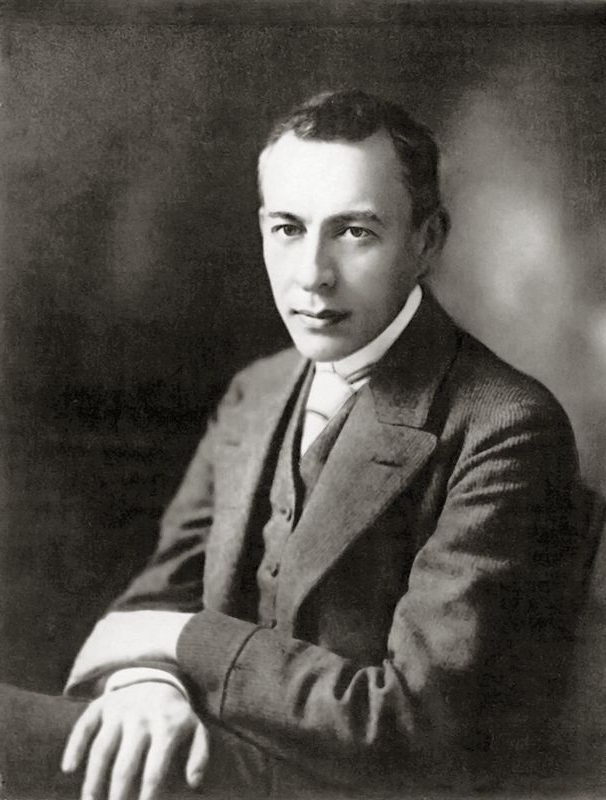 date instead of writing about Rachmaninov, one of the most popular composers of the 20th century who was definitely born on April 1st. And a year ago, we wrote about Johann Kuhnau, Bach’s predecessor as Thomaskantor in Leipzig, but again, not about Rachmaninov. Fortunately, it seems that among our listeners there are not too many sticklers for historical detail. We’re not trying to avoid Rachmaninov: he was a great composer, even if perception of his music has been changing over the years (but of course that also could be said about any composer of note). He was not a pathbreaker; his musical idiom came straight from the 19th century Russian tradition. Still, the totality of his work is original, he was a wonderful melodist and had a great sense of form. And, in additional to all that, he was one of the greatest pianist of the first half of the 20th century!
date instead of writing about Rachmaninov, one of the most popular composers of the 20th century who was definitely born on April 1st. And a year ago, we wrote about Johann Kuhnau, Bach’s predecessor as Thomaskantor in Leipzig, but again, not about Rachmaninov. Fortunately, it seems that among our listeners there are not too many sticklers for historical detail. We’re not trying to avoid Rachmaninov: he was a great composer, even if perception of his music has been changing over the years (but of course that also could be said about any composer of note). He was not a pathbreaker; his musical idiom came straight from the 19th century Russian tradition. Still, the totality of his work is original, he was a wonderful melodist and had a great sense of form. And, in additional to all that, he was one of the greatest pianist of the first half of the 20th century!
His life, as lives of so many Russian artists who lived through the Revolution, was broken in two: the Russian part and the exile. Rachmaninov was born on April 1st (or March 20th, old style) of 1873 on a family estate in the Novgorod province of northern Russia. His family was quite rich in the previous generations, but his father had squandered much of the wealth, leaving them just one estate at Oneg, and even that would be lost soon after. Rachmaninov, who received early piano lessons from his mother, was sent to the St.-Petersburg conservatory. Things did not go well there, and he transferred to Moscow to study with Nikolay Zverev. Lacking fund for his own place, he lived in his teacher’s apartment. That was providential, as that’s where he met many musicians who were influential in his development: Anton Rubinstein, Taneyev, Arensky, and, most importantly, Tchaikovsky. Taneyev and Arensky became his teachers at the Conservatory; he also took piano classes with a cousin 10 years his elder, Alexander Siloti (Siloti, a pupil of Nikolai Rubinstein, Tchaikovsky and Liszt, a virtuoso pianist and conductor, would also emigrate to the US after the Revolution). For a while Rachmaninov continued living with Zverev, but in 1888 moved in with his relatives, the Satins. Satins had an estate, Ivanovka, near Tambov, deep in the Russian provinces. Rachmaninov fell in love with the place; that’s where he would do most of his composing (Mahler at Steinbach or Maiernigg comes to mind). That’s were, in 1891, at just 18 years old, he wrote the First Piano concerto, his first major work. Rachmaninov fell in love not just with the place, he also fell in love with one of the Satins, the young Natalia. They were first cousins (Natalia’s mother was the sister of Sergei’s father) and therefore needed special permission to marry: in the end, a petition had to be sent to the Czar and was granted. They married in 1902 and stayed together till Rachmaninov’s death in 1945.
In 1892, as a graduation work at the Conservatory, he wrote Aleko, a one-act opera based on Pushkin’s poem The Gypsies. It was premiered in the Bolshoi a year later, with Tchaikovsky attending. Some year later Chaliapin sang in it and it’s still being staged today, if not very frequently. At the conservatory, the opera was awarded the highest mark, with Rachmaninov receiving the great Gold Medal.
Here’s Rachmaninov’s Piano Concerto no. 1, op. 1 in a brilliant performance by Krystian Zimerman. Seiji Ozawa conducts the Boston Symphony Orchestra. You cannot compare it to the Second and Third concertos but Rachmaninov’s melodic gifts are obvious, as is the wonderful mix of lyricism and energy.Permalink
March 27 2017. Cabezón and Haydn. Antonio de Cabezón, one of the most important keyboard composers of the Spanish Renaissance, was born on March 30th of 1510 (or at least that is traditionally assumed to be his birth date). The year 1510 makes him the exact contemporary of Flemish composers Tielman Susato and Jacob Clemens non Papa; on the Spanish music timeline,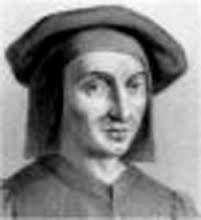 Cristóbal de Morales was five years older and Tomás Luis de Victoria - a generation younger. Little is known about Cabezón: he was born in a small town in northern Spain not far from Burgos, and was blind from childhood. In 1526 he entered the service of Queen Isabella of Portugal, wife of Charles I, king of Spain, who as Charles V, the Holy Roman Emperor, became the most powerful ruler in Europe. At the court, Cabezón was employed as an organist and clavichord player. In 1538 he was appointed the chamber musician to Charles himself. Later, Cabezón became the music teacher to Prince Felipe, the future king of Spain, and accompanied him on his travels to Italy, the Netherlands, Germany and London. Cabezón’s music influenced many composers, especially English ones, such as Thomas Tallis and William Byrd. Here’s is a short piece by Cabezón called Pavana con su glosa, it’s performed by the ensemble Capella Virelai. And here is one of his Quatro favordones, variations that so affected his English audiences. Hamonices Mundi is conducted by Claudio Astronio.
Cristóbal de Morales was five years older and Tomás Luis de Victoria - a generation younger. Little is known about Cabezón: he was born in a small town in northern Spain not far from Burgos, and was blind from childhood. In 1526 he entered the service of Queen Isabella of Portugal, wife of Charles I, king of Spain, who as Charles V, the Holy Roman Emperor, became the most powerful ruler in Europe. At the court, Cabezón was employed as an organist and clavichord player. In 1538 he was appointed the chamber musician to Charles himself. Later, Cabezón became the music teacher to Prince Felipe, the future king of Spain, and accompanied him on his travels to Italy, the Netherlands, Germany and London. Cabezón’s music influenced many composers, especially English ones, such as Thomas Tallis and William Byrd. Here’s is a short piece by Cabezón called Pavana con su glosa, it’s performed by the ensemble Capella Virelai. And here is one of his Quatro favordones, variations that so affected his English audiences. Hamonices Mundi is conducted by Claudio Astronio.
Franz Joseph Haydn, born on March 31st of 1732, was one of the greatest, if sometimes underappreciated, composers ever. We’ve written about him many times, and will write more. Haydn was extremely prolific, writing in every musical genre known in his time. He composed 104 symphonies, more than 60 quartets, 62 piano sonatas, trios, concertos, wonderful cantatas and even operas, written for Esterházy’s enjoyment. In 1790, Prince Nikolaus Esterházy died; his successor, Prince Anton wanted to save money and wasn’t interested in music as much as his father. He formally retained Haydn at a smaller salary but allowed him to travel, something Haydn was longing to do for quite some time. Johann Peter Salomon, an impresario and a fine violinist, arranged a trip to London, where Haydn’s music was very popular. Haydn, travelling with Salomon, left Vienna on December 15th of 1790. They crossed through Germany and arrived in Calais, France. On New Year’s Day of 1791 they sailed to Dover. “I stayed on deck during the entire crossing so as to gaze my fill of that great monster, the ocean,” he wrote in a letter. Haydn had never seen the ocean before. They arriving in London on January 2nd. Haydn was welcomed with great enthusiasm. The papers printed news about him, he was invited to many noble houses, the Prince of Wales (the future King George IV) became a patron. Haydn found many pupils for his piano lessons, again mostly from amoung the nobility. His music was widely performed, and of the three latest symphonies, nos. 90 through 92, the last one became a favorite. London, the largest city in Europe, was full of musicians from different countries, from the French escaping the Revolution to the ever-migrating Italians and Germans. The orchestras were large, larger than in Vienna or in Eszterháza. At the beginning of Haydn’s employ, the orchestra at Eszterháza consisted of just 14 players, which was quite enough for the smaller halls of the palace. Later the number grew to about 25. In London, orchestras were at least 40 players strong, and sometimes consisted of 60 musicians. Even though Haydn didn’t have much time to compose, during the following year he wrote six symphonies, nos. 93-98, all of amazing quality. We know them now as his “London symphonies.” Here’s Carlos Kleiber conducting the Vienna Philharmonic in a live 1982 recording of Symphony no. 94, “Surprise.”Permalink
March 20, 2017. Bach, Hasse and more. Johann Sebastian Bach was born on March 21st of 1685. We hope to be forgiven for not going any further this year (but do see below).
A very different German composer was also born this week. Johann Adolph Hasse, who wrote Italian operas admired both in Italy and in Germany, was born in Bergedorf, near Hamburg. He was baptized on March 25th of 1699. Hasse started his musical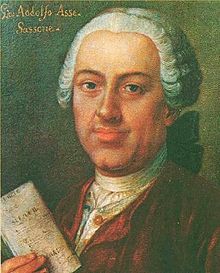 career as a singer, but by the age of 22 wrote his first opera, Antioco. The following year he left for Italy. He traveled through Venice, Bologna, Florence and Rome but eventually settled in Naples. There, he met Alessandro Scarlatti, who befriended Hasse and became his teacher. He also met with Nicola Porpora and maybe took some music lessons from him too. Carlo Broschi, known as Farinelli, Porpora’s pupil, was a brilliant castrato singer; Hasse and Farinelli became good friends and eventually Farinelli would premier several of Hasse’s operas. Hasse lived in Naples for seven year, enjoying a highly successful career. In 1730 he went to Venice where his opera Artaserse was performed during the Carnival. Farinelli sung the title role. When Farinelli was in Spain (he became the Chamber musician to King Philip V in 1737 and stayed in Spain for the next 10 years) he sung, on the King’s request, two arias from Act 2, Per questo dolce amplesso and Pallido il sole, every evening. Here’s Per questo, sung by the soprano Vivica Genaux with the Akademie fur Alte Musik Berlin under direction of René Jacobs, and here – Pallido, in an interpretation closer to Farinelli’s, as it’s sung by the countertenor Andreas Scholl. The Orchestra of the Age of Enlightenment is conducted by Roger Norrington.
career as a singer, but by the age of 22 wrote his first opera, Antioco. The following year he left for Italy. He traveled through Venice, Bologna, Florence and Rome but eventually settled in Naples. There, he met Alessandro Scarlatti, who befriended Hasse and became his teacher. He also met with Nicola Porpora and maybe took some music lessons from him too. Carlo Broschi, known as Farinelli, Porpora’s pupil, was a brilliant castrato singer; Hasse and Farinelli became good friends and eventually Farinelli would premier several of Hasse’s operas. Hasse lived in Naples for seven year, enjoying a highly successful career. In 1730 he went to Venice where his opera Artaserse was performed during the Carnival. Farinelli sung the title role. When Farinelli was in Spain (he became the Chamber musician to King Philip V in 1737 and stayed in Spain for the next 10 years) he sung, on the King’s request, two arias from Act 2, Per questo dolce amplesso and Pallido il sole, every evening. Here’s Per questo, sung by the soprano Vivica Genaux with the Akademie fur Alte Musik Berlin under direction of René Jacobs, and here – Pallido, in an interpretation closer to Farinelli’s, as it’s sung by the countertenor Andreas Scholl. The Orchestra of the Age of Enlightenment is conducted by Roger Norrington.
In 1730 Hasse married Faustina Bordoni, a famous mezzo-soprano, who made her name in London singing in operas of Handel and Bononcini (there, her rivalry with another diva, the soprano Francesca Cuzzoni, was legendary). That same year Hasse and Faustina moved to Dresden, to the lavish court of Augustus II “the Strong,” the Elector of Saxony and King of Poland, where Hasse was given the position of Kapellmeister. Faustina made her debut at the court the day after the couple arrived in Dresden. A year later Hasse wrote Cleofide, an opera based on Metastasio’s original libretto. It was premiered at the Opernhaus am Zwinger, the royal opera house, one of the largest in Europe. Faustina sung the title role. Johann Sebastian Bach, who was then the Thomaskantor in Leipzig, and his son Carl Philipp Emanuel Bach attended the performance. The next day Bach Sr. gave an organ performance in the Sophienkirche, a historic Gothic church that was damaged in 1945 and destroyed later by the GDR rulers (we wrote about the church in one of our entries on Wilhelm Friedemann Bach). C.P.E said later that Johann Sebastian and Hasse were “well acquainted.” Here is Cleofide’s aria Digli ch'io son Fedele, sung by the wonderful English soprano Emma Kirkby. William Christie conducts Cappella Coloniensis.
Hasse’s career was at its zenith, he was immensely popular both in Germany and in Italy, where he was going practically every year. Hasse was still to meet Frederick the Great and make friends with Metastasio. About this and more, some other time.
Béla Bartók, one of the most influential composers of the first half of the 20th century, was also born this week, on March 25, 1881. And Pierre Boulez, extremely influential in the second half of the 20th century, was born on March 26th of 1925.Permalink
March 13, 2017. Hugo Wolf, a wonderful composer of the German Lied, was born today in 1860. He lived a short life, dying of syphilis in 1903; he mentally deteriorated much earlier: his last song was written in 1898. What a scourge it was,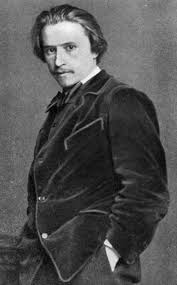 syphilis, before the invention of penicillin! Schubert died of it at the age of 31, and so did Schumann, just 46. It is thought that Beethoven’s deafness was brought on by syphilis. Gaetano Donizetti died suffering terribly, Frederick Delius went blind and became paralyzed, and Niccolò Paganini lost his voice, probably of the mercury treatment, which back then was considered a treatment for the terrible disease. The notion of a great composer suffering from syphilis was so common that Thomas Mann made it central in his great novel, Doktor Faustus, but with a literary twist: he had the protagonist, the composer Adrian Leverkühn, strike a bargain with the Devil, the disease as payment for being a genius. Mann studied Wolf’s biography and used some episodes to describe Leverkühn descending into madness.
syphilis, before the invention of penicillin! Schubert died of it at the age of 31, and so did Schumann, just 46. It is thought that Beethoven’s deafness was brought on by syphilis. Gaetano Donizetti died suffering terribly, Frederick Delius went blind and became paralyzed, and Niccolò Paganini lost his voice, probably of the mercury treatment, which back then was considered a treatment for the terrible disease. The notion of a great composer suffering from syphilis was so common that Thomas Mann made it central in his great novel, Doktor Faustus, but with a literary twist: he had the protagonist, the composer Adrian Leverkühn, strike a bargain with the Devil, the disease as payment for being a genius. Mann studied Wolf’s biography and used some episodes to describe Leverkühn descending into madness.
Wolf was born in Duchy of Styria, then part of the Austrian Empire, now in Slovenia. A child prodigy, he started studying two instruments, the piano and the violin, at the age of four. When he was 11 he was sent to a boarding school at the Benedictine abbey of St. Paul in Lavanttal, Carinthia. There he played the organ, performed in a piano trio and studied operas by the Italian bel canto masters and Gounod. In 1875 he moved to Vienna to study at the conservatory. There he composed his first songs and made many friends, one of whom was Gustav Mahler (they were born just three months apart). While in Vienna, Wolf became an avid opera-goer; in 1875 he heard Tannhäuser and Lohengrin, declaring himself a Wagnerian in the aftermath. He met Wagner in December of that year and showed him several compositions; Wagner was supportive but suggested that Wolf write more substantive pieces. His early compositions were noticed in Viennese musical circles and he found several benefactors, which allowed him to compose without having to seek additional income. That was fortunate as Wolf’s temperament made him ill-suited for teaching. As fate would have it, it was one of his patrons, a wealthy but minor composer Adalbert von Goldschmidt, who took Wolf to a brothel for a “sexual initiation”; it’s there that Wolf most likely contracted syphilis. Financial support being tenuous, Wolf tried to earn money as a professional musician, playing violin in an orchestra. That didn’t work out, so eventually he turned to musical criticism. He became known as a passionate writer who could be very hard on some composers (Anton Rubinstein, the author of the opera Demon, was one of his victims).
In 1888 Wolf dropped musical criticism and moved to Perchtoldsdorf, a suburb of Vienna, to a vacation home of a friend. There he immersed himself in composing. Thus commenced the most productive period of Wolf’s life: in 1888 alone he composed more than 90 songs. The two songs that we’ll hear are from that period. Both are performed by the soprano Elisabeth Schwarzkopf, one of the finest interpreters of Wolf’s songs. Here’s Kennst du das Land (Do you know the land), based on Manon’s song from Goethe’s Wilhelm Meister, and here – Nachtzauber, after a poem by the German poet Joseph Freiherr von Eichendorff. Gerald Moore is on the piano in both recordings. Wolf continued composing feverishly till 1891, when his habitual depression set in, probably aggravated by the early onset of syphilis. While he stopped composing, his fame grew, especially in Germany. Even Brahms, whom Wolf severely criticized in some of his articles, and therefore was not a big supporter, acknowledged Wolf’s talent. In the following years, Wolf composed an opera, Der Corregidor, based on The three-cornered Hat by Alarcón. It was staged in 1896 with some initial success but soon was dropped, not to be revived to this day. He started another opera, also after Alarcón. called Manuel Venegas but abandoned it after writing just several scenes. By 1898 his madness was obvious. He insisted that he was the music director of the Vienna Opera (Mahler actually was), attempted suicide, after which he was placed into an asylum for the insane. He died there on February 22nd of 1903.Permalink
March 6 2017. Ravel and more. The ever popular Maurice Ravel was born on March 7th of 1875. He’s a favorite both with performers (in our library we have about 150 recordings) and with listeners (for the different interpretations of La Valse more so than for any other of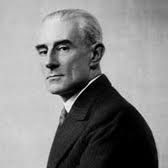 Ravel’s compositions). He started as a younger contemporary of Debussy, 13 years his senior, and lived into the era dominated by Stravinsky and Schoenberg. One of Ravel’s first serious pieces was Pavane pour une infante défunte (Pavane for a dead princess), a piano composition written in 1899 while he was still studying at the Paris Conservatory (his composition teacher was Gabriel Fauré). Here it is, played by the American pianist Bill-John Newbrough. In 1910 Ravel created an orchestral version, which can be heard as often as the original piano work. One of the Ravel’s last compositions was a song cycle Don Quichotte à Dulcinée, from 1932-33. It was written on the texts by the writer Paul Morand. Morand, born in 1888, was a good friend of Marcel Proust. Proust was half-Jewish, some of his friend were Jewish but some – anti-Dreyfusards and anti-Semites; unfortunately, Morand belonged to the latter group. In the late 1930s Morand became close to the anti-Semitic Action française, and later, during the War, to the Vichy government. Speaking of Proust, it’s interesting that he admired Debussy (he heard Pelléas et Mélisande several times on his Théâtrophone, an ingenious device that allowed the owner to listen to live opera or theatrical performances over the phone) but practically never mentioned Ravel. One explanation may be that Reynaldo Hahn, a noted composer and one of Proust’s closest friends, was rather critical of Ravel’s work. Here’s Chanson Romanesque from Don Quichotte with Dietrich Fischer-Dieskau. Karl Engel is on the piano.
Ravel’s compositions). He started as a younger contemporary of Debussy, 13 years his senior, and lived into the era dominated by Stravinsky and Schoenberg. One of Ravel’s first serious pieces was Pavane pour une infante défunte (Pavane for a dead princess), a piano composition written in 1899 while he was still studying at the Paris Conservatory (his composition teacher was Gabriel Fauré). Here it is, played by the American pianist Bill-John Newbrough. In 1910 Ravel created an orchestral version, which can be heard as often as the original piano work. One of the Ravel’s last compositions was a song cycle Don Quichotte à Dulcinée, from 1932-33. It was written on the texts by the writer Paul Morand. Morand, born in 1888, was a good friend of Marcel Proust. Proust was half-Jewish, some of his friend were Jewish but some – anti-Dreyfusards and anti-Semites; unfortunately, Morand belonged to the latter group. In the late 1930s Morand became close to the anti-Semitic Action française, and later, during the War, to the Vichy government. Speaking of Proust, it’s interesting that he admired Debussy (he heard Pelléas et Mélisande several times on his Théâtrophone, an ingenious device that allowed the owner to listen to live opera or theatrical performances over the phone) but practically never mentioned Ravel. One explanation may be that Reynaldo Hahn, a noted composer and one of Proust’s closest friends, was rather critical of Ravel’s work. Here’s Chanson Romanesque from Don Quichotte with Dietrich Fischer-Dieskau. Karl Engel is on the piano.
When Mozart said that "Bach is the father, we are the children,” he didn’t mean Johann Sebastian Bach, he meant his second son, Carl Philipp Emanuel Bach. It may be surprising to us, but during Mozart’s time, C.P.E. Bach’s reputation was held in higher esteem than his father’s. Carl Philipp Emanuel, whose second name came from his godfather, Georg Philipp Telemann, was born on March 8th of 1714 in Weimar, where his father served as the organist and Konzertmeister at the court of dukes of Saxe-Weimar. From 1738 and for the following 30 years, Emanuel, as he was known to his contemporaries, served in Berlin at the court of Crown Prince Frederick of Prussia, who in 1740 was crowned as King Frederick II (the Great). Emanuel was allowed to leave in 1768 to succeed his godfather Telemann as music director in Hamburg. In 1769 Emanuel wrote The Israelites in the Desert, an oratorio considered to be his masterpiece. Five years later he wrote another oratorio, Die Auferstehung und Himmelfahrt Jesu (The Resurrection and Ascension of Jesus). The libretto was by one Karl Wilhelm Ramler written in 1760, and that same year the prolific Telemann used it for an oratorio of his own. C.P.E. Bach’s oratorio is not well known, at least not as well as his Israelites, which is a pity, as it is a marvelous piece. Here are the first seven episodes of Part I, from the Introduction to the wonderful soprano aria “Wie bang hat dich mein Lied beweint!” (How anxiously my song mourned for you). The ensemble Rheinische Kantorei is directed by Hermann Max, Martina Lins is the soprano.
Don Carlo Gesualdo, the Czech composer Josef Mysliveček, who lived at approximately the same time as C.P.E. Bach, Samuel Barber and Arthur Honegger were also born this week. We’ll have to write about them another time.Permalink